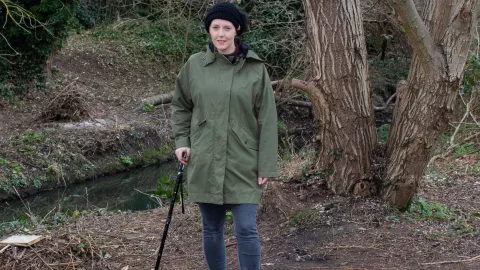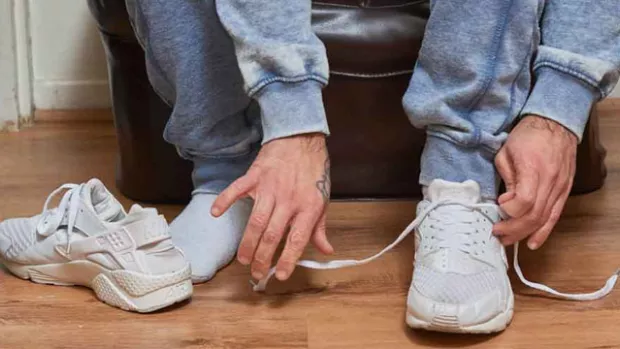
Unusual symptoms: how I manage MS foot drop
I was diagnosed with relapsing MS in 2015, but for years before that I had been a bit unsteady on my feet. I was always falling over, I joked that I could trip up on thin air.
After the birth of my second child in 2012, I noticed that when I walked for longer than about 20 minutes my left leg would get incredibly weak and wobbly. That was the symptom that sent me to the GP and eventually led to my diagnosis.
I now know that what I was experiencing is called ‘foot drop’. It means you don’t properly lift the front of your foot when you’re walking, causing you to drag your toes on the ground. This makes walking more tiring because you have to make more effort to lift your whole leg to compensate.
Physiotherapy exercises for MS foot drop
Before I was diagnosed with MS I thought the issue with my leg would be a short-term problem. So it was a shock to find out that it was due to irreversible damage that might continue to get worse. I was really concerned about the extent to which my independence would be affected if I couldn’t be as mobile. I also fell badly a few times and ended up needing hospital treatment, which made walking start to feel a bit scary.
I was referred to a neuro-physiotherapist who showed me exercises and stretches to do. I find it helps to do calf stretches as my calf muscles are very tight which means it’s harder for my foot to lift. She also told me about some devices that can help with foot drop. One is a foot splint - it attaches around my ankle and hooks onto my shoelaces, pulling my foot upwards.
Using a Functional Electrical Stimulation device (FES)
Another device I’ve been lucky enough to be given is a Functional Electrical Stimulation device (FES). This is a small box with two wires. One of them connects to a switch I wear in my shoe and the other connects to two electrodes I stick onto my upper calf. When I lift my foot the switch in my shoe detects this and sends a signal to the box. This sends an electrical current to the two electrodes that then stimulate the muscle in my calf to lift my toes.
Attaching the device is tricky at first but after a few years it’s now second nature. I’ve found ways of adapting my clothing so that I can still wear what I want with the FES.
Getting my independence back
I’ve also started using a walking stick which helps my balance. This took some getting used to and I felt very self-conscious about it at first. But in combination with the FES and foot splint it has given me some of my independence back.
My foot drop is very annoying, but I’ve found there are ways to deal with it so it doesn’t have too much of an impact on my life.







